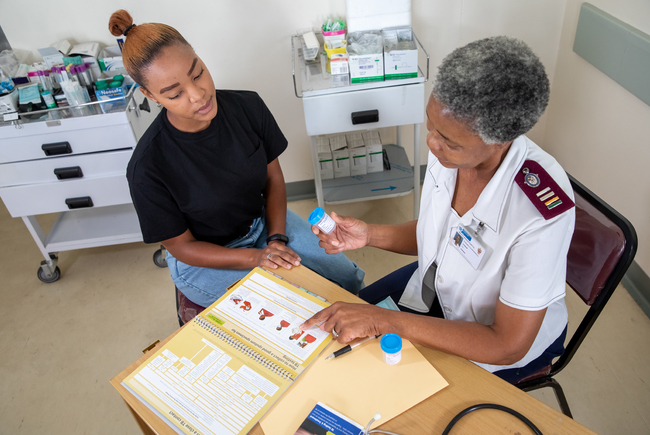GSB's state-capture research
15 September 2017 | Story Supplied. Photo Gerhard Roux via Wikimedia.
The Eskom Inquiry may have been postponed, but the momentum that is gathering against the forces of state capture cannot now be stopped, say academics at the UCT Graduate School of Business (GSB).
In the “State of Capture” report released by former Public Protector Thuli Madonsela in 2016, Eskom is mentioned 913 times. Until that point, South Africans had little idea about how deeply state-owned enterprises were implicated in the large-scale corruption project referred to as state capture.
Madonsela’s report has been followed by even more revelations from investigative journalists, the South African Council of Churches, and academics within the State Capacity Research Project.
On Tuesday, 12 September, Professor Anton Eberhard and Catrina Godinho from the GSB made a further contribution with the release of a reference booklet that provides an independent, accessible and concise account of the alleged instances of governance failure and corruption at Eskom.
“If we put it bluntly, this is part of a story which is reflective of the fact that some R150 billion to R250 billion has disappeared from South Africa’s overall fiscal system,” former Minister of Finance Pravin Gordhan noted at the launch.
The booklet brings together information that has emerged around what has taken place at the power utility since the start of Jacob Zuma’s presidency in 2009. It presents the information in a coherent, easily understandable timeline that shows how governance at the power utility was systematically destabilised, allowing corruption to set in.
“It’s so hard when you’re in the midst of these processes to see this all clearly, but looking back I think we can see what happened,” said Eberhard.
“Shortly after Zuma came to the presidency he expressed an unusual degree of interest in board appointments, particularly at Eskom and Transnet. We had a minister at that time, Barbara Hogan, who resisted the deployments of cadres, and that soon cost her her job.”
“It is imperative that ... the appropriate witnesses are called to account. South Africans are watching.”
Repurposing of governance
Malusi Gigaba replaced Hogan as Minister of Public Enterprises in November 2011, and just seven months later entirely overhauled the board, replacing all but two non-executive directors. That was the start of what Eberhard calls the “repurposing of governance” at Eskom to allow for the large-scale corruption that followed, and continued under Lynne Brown.
The booklet details how a number of tenders were decided at board or ministerial level, against executive procurement committee decisions; how coal contracts with the Gupta-owned Brakfontein mine were signed and extended despite the coal not meeting quality or environmental standards; and how Eskom’s assistance was critical in Gupta-owned Tegeta gaining ownership of Optimum Coal Holdings from Glencore.
It also looks at how Eskom has ‘squeezed out’ coal majors such as Anglo Coal and Exxaro, against economic and, in the case of Exxaro, transformation imperatives.
The most egregious example is that the new Kusile Power Station was specifically situated beside Anglo’s New Largo coal deposit, yet the mine remains undeveloped and coal is being trucked to Kusile at high cost because Anglo does not meet the 50% + 1 black ownership requirement imposed by Gigaba without any official policy, legislative or regulatory backing in 2011.
The booklet has been designed to serve as an important source of reference for Parliament’s Public Enterprises Committee inquiry into state capture at Eskom, Transnet and Denel, which was meant to start this week but will now begin next month. It includes a number of questions that committee members are encouraged to probe.
Growing body of evidence
“If Parliament fulfils its constitutional mandate, the fingerprints of the president, the Guptas and their associates, of ministers Gigaba and Brown, and of implicated Eskom board members and management will be revealed,” said Eberhard.
“In the past several months, we have witnessed the rallying of civil society, investigative journalists, academia, public leaders and concerned citizens who have come together to expose an overwhelming and growing body of evidence around the mechanics of state capture. The pending Eskom Inquiry is set to take that to a new level,” he added.
“It is imperative that the inquiry not be further delayed and that the appropriate witnesses are called to account. South Africans are watching.”
Gordhan, who is a member of that committee, agreed that this has significant social, economic and political implications for the country.
“There is a political economy around this report which puts some serious questions before us about what kind of politics we are playing out in South Africa today,” Gordhan said.
“What is the structure of our state, and how is it that with the Constitution that we have, the checks and balances we thought we built in, the powerful civil society, media and other organs that we have operating in our country, how do we still end up where we are?”
Download a copy of the Eskom Inquiry booklet…
The authors would like to invite any concerned citizens who wish to provide further information or insights into the Eskom state capture story – which might be of value to the ongoing research work – to get in contact.
 This work is licensed under a Creative Commons Attribution-NoDerivatives 4.0 International License.
This work is licensed under a Creative Commons Attribution-NoDerivatives 4.0 International License.
Please view the republishing articles page for more information.
Research & innovation





































